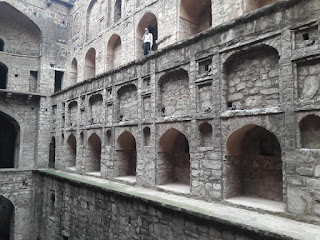Delhi Heritage Trail : 31
Smith Cupola
The Qutub Minar a 13th century Delhi sultanate monument was struck by lightening in 1368 AD and the top two stories of the tower were destroyed. Firoz Thuglak the Sultan at that time replaced the fallen storey with two floors and placed a Cupola at the top. It remained like that for more than 400 years when in 1803 a major Earthquake struck Delhi and the Qutub was damaged extensively and Firoz Shah Cupola was also damaged heavily. In 1828 Major Robert Smith a Military Engineer of East India Company was asked by the Governor General to renovate the Minar. He in addition to doing tbe repairs placed a Cupola (a Bengali Hindu type Chatthri ) as in the picture on tbe top of the Minar. This was not in consonance with the Indo Islamic architecture of the Qutub Minar and remained out of place. Finally in the year 1848 the then Governor General Hardinge ordered to remove the Cupola and it was kept in the northern side of the complex. This episode in the history of the Minar is often referred as " Smiths Folly ".

















